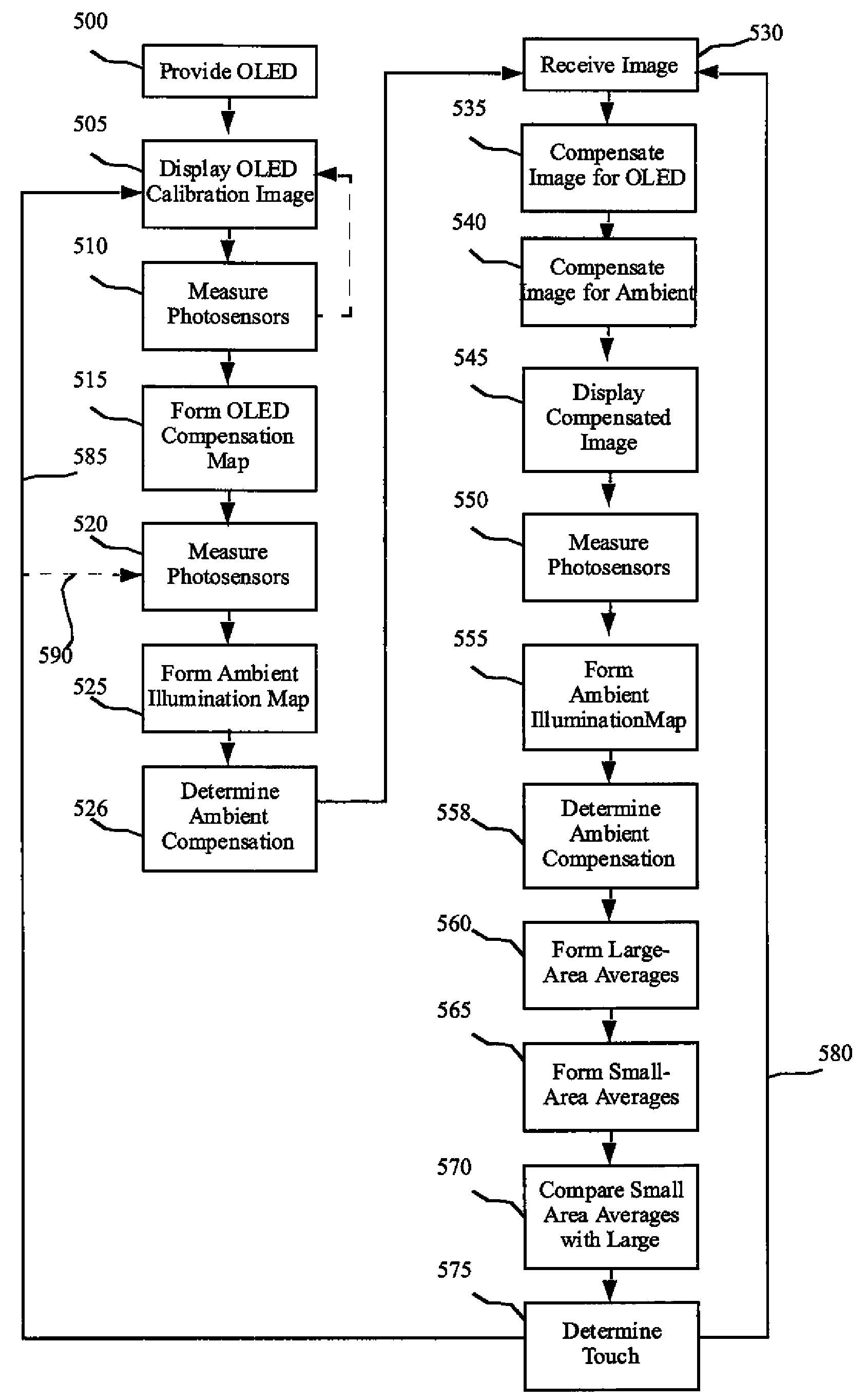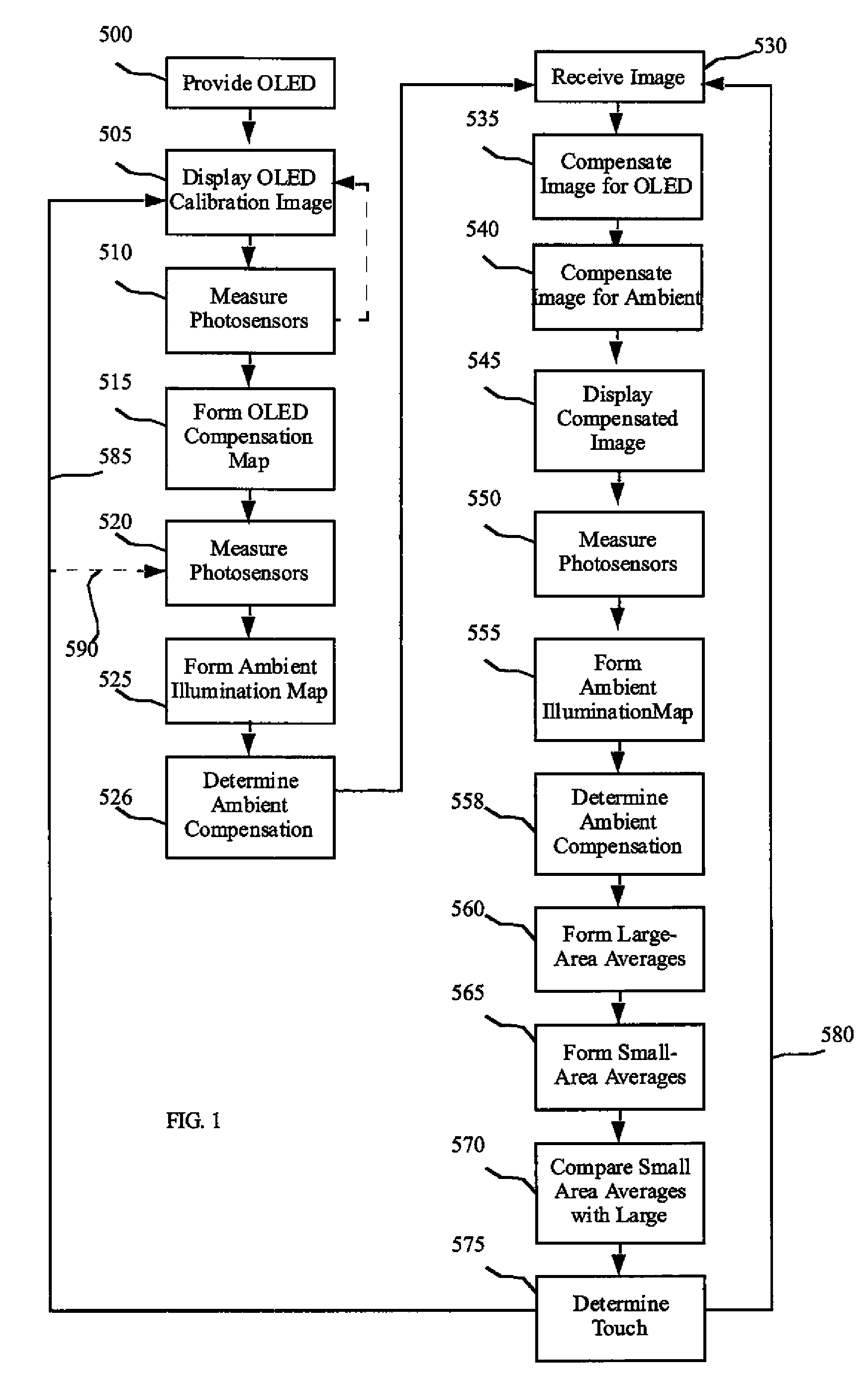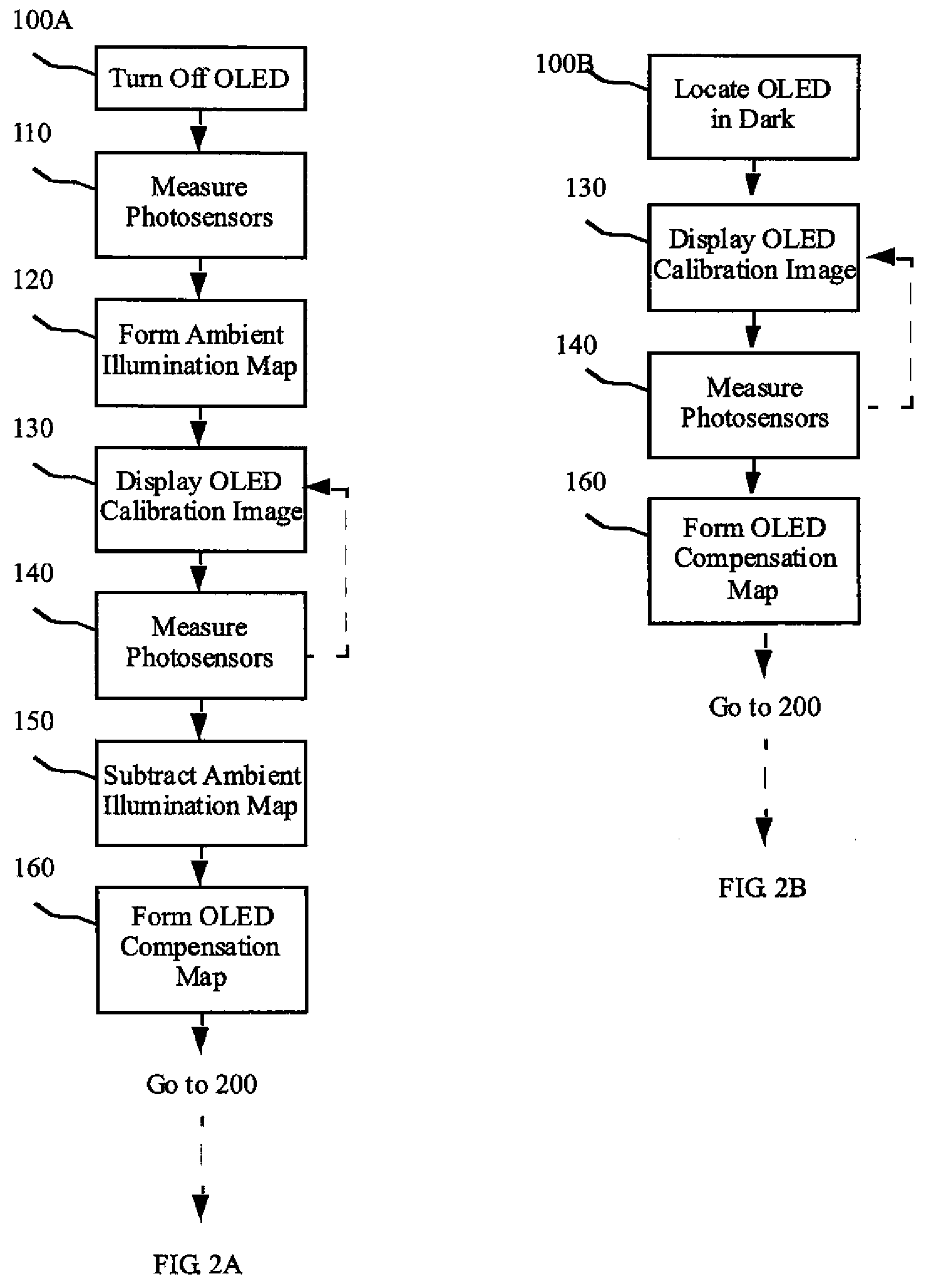Light sensing in display device
a display device and light sensing technology, applied in static indicating devices, instruments, electroluminescent light sources, etc., can solve the problems of display washed out, lack of color saturation, and loss of efficiency of oled display devices,
- Summary
- Abstract
- Description
- Claims
- Application Information
AI Technical Summary
Benefits of technology
Problems solved by technology
Method used
Image
Examples
Embodiment Construction
[0035]FIG. 1 includes a method for controlling an OLED display that is practiced by the external controller 60 shown in FIG. 6. In one embodiment of the present invention, the method includes providing 500 a substrate, an array of OLED pixels formed on the substrate forming a display area and having electrodes formed over the substrate. An array of photosensors distributed over the display area and supporting circuitry measures and communicates the ambient and emitted OLED light incident upon the photosensors. The OLED pixels are then driven 505 with at least one calibration image, a first incident light measurement made 510 and communicated to an external controller, and an OLED compensation map formed 515. These steps can be done initially in a manufacturing process, e.g. as part of a calibration process. This initial OLED compensation map can provide display non-uniformity correction and include any effects of factory burn-in, if performed on the OLED. The OLED calibration image ...
PUM
 Login to View More
Login to View More Abstract
Description
Claims
Application Information
 Login to View More
Login to View More - R&D
- Intellectual Property
- Life Sciences
- Materials
- Tech Scout
- Unparalleled Data Quality
- Higher Quality Content
- 60% Fewer Hallucinations
Browse by: Latest US Patents, China's latest patents, Technical Efficacy Thesaurus, Application Domain, Technology Topic, Popular Technical Reports.
© 2025 PatSnap. All rights reserved.Legal|Privacy policy|Modern Slavery Act Transparency Statement|Sitemap|About US| Contact US: help@patsnap.com



